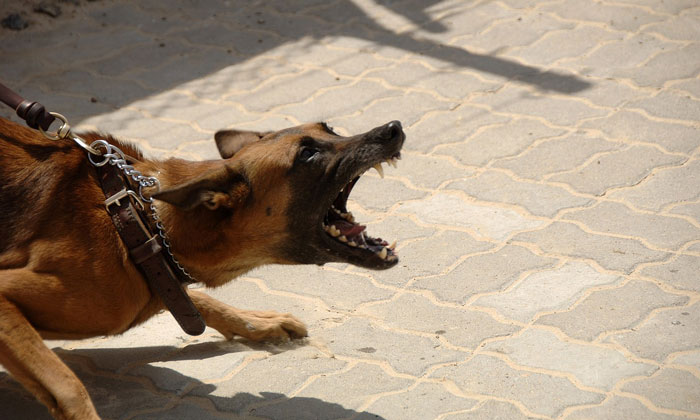There were over 90 million dogs residing in people’s homes across the United States in 2018, according to the American Pet Products Association.
Unfortunately, there are more than 5 million dog bites reported each year, according to the Centers for Disease Control. Of that amount, almost 900,000 require medical care, and about 50% of those cases involve children.
While insurers will cover most dogs, some will not insure a long list of specific breeds. Dobermans and pit bulls are on many of the exclusion lists. Some insurers do not discriminate by breed and instead determine a dog’s status by individual evaluation.
If their pets bite guests or people who come on their property, owners are almost always liable for the damages. A dog does not have to be on a list of vicious breeds to make an owner liable.
If an owner knew of a dog’s tendency to bite and it can be proven through records of similar incidents, the owner may be sued for negligence and the damages are likely to be higher than if the bite was unexpected and the dog had not shown aggressiveness to humans in the past.
That said, the owner may not liable if the dog did not have a known propensity to bite and was not considered a vicious breed. For example, a mellow basset hound biting a person for the first time may not result in responsibility by the owner. However, a pit bull biting a person for the first time would likely result in the owner being held liable.
In some states, insurers are not allowed to deny coverage to people with certain breeds of dogs, and they are not allowed to cancel policies if people obtain questionable breeds. However, dog owners are required to buy additional liability insurance in some states if they own certain breeds of dogs.
There are three types of laws that put liability on dog owners:
- A bite statute places automatic liability on the owner for any injuries.
- A one-bite rule places liability on the owner only if they knew of the dog’s propensity to bite.
- Negligence laws place liability on an owner if the owner is careless in controlling the animal.
- Impact of dog bites
In 2018, dog bite claims accounted for about 35% of all liability claims among homeowners. The total amount paid by insurers in claims was over $600 million.
The average cost in the US in 2018 for claims of this type was more than $39,000. Costs have risen steadily over the past few years, which is mostly due to the rising costs of medical care and the larger settlement awards for lawsuits.
Not all claim amounts are attributable only to dog bites. In addition to biting people, dogs also knock down children and elderly individuals, which results in additional injuries. They also knock cyclists off of their bikes and cause damage to both the cyclists and their bikes. Other factors also increase the severity of some incidents and lead to higher claim amounts.
What you can do
Dog owners can help reduce the number of claims made by being responsible. Keep pets in crates or in a locked room when guests visit or when service workers come to the house.
For outdoor pets, provide sturdy fencing and a locked gate. Always display signs that alert people of the dog’s presence. If there is no fence around the yard, keep the dog on a leash when taking it outdoors.
To be safe, do not let strangers pet your dog. One incident can be costly, and may even result in the animal being put to sleep in some places.
To learn more about preventing costly dog bites, contact me here.





